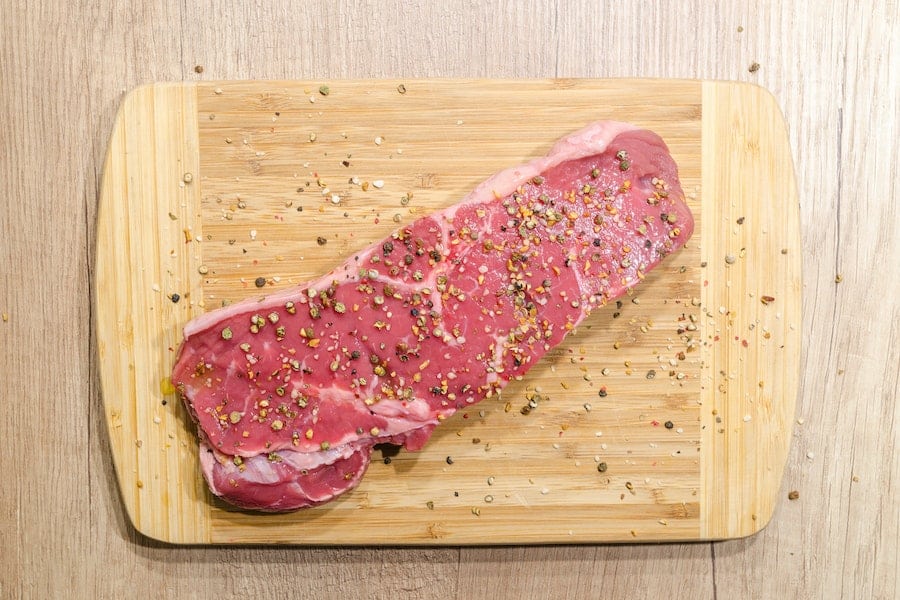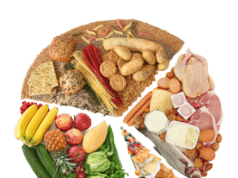
Cooking the perfect steak is an art that many aspiring home chefs strive to master. When it comes to achieving unparalleled flavor and tenderness, using a Blackstone griddle can be a game-changer. With its even heat distribution and ample cooking space, this versatile cooking tool has gained immense popularity. In this comprehensive guide, we will walk you through the step-by-step process of cooking a mouthwatering steak on a Blackstone griddle. From choosing the right cut of meat to mastering different levels of doneness, get ready to elevate your griddling skills to new heights.
How To Cook The Perfect Steak On A Blackstone Griddle?
- Choose the Right Cut of Steak: The first step to cooking the perfect steak on a Blackstone griddle is selecting the right cut of meat. Opt for well-marbled steaks like ribeye or New York strip, as they tend to be more flavorful and tender. Thickness matters too; aim for steaks that are at least 1 inch thick to ensure even cooking.
- Preheat the Blackstone Griddle: Before placing the steak on the griddle, make sure it’s properly preheated. Set the griddle to medium-high heat and let it heat up for several minutes. This ensures a sizzling sear that locks in the steak’s juices.
- Season and Oil the Steak: Prior to cooking, season the steak generously with salt and pepper, or your preferred seasoning blend. Let it sit at room temperature for about 30 minutes to allow the flavors to infuse. Additionally, lightly coat the steak with a high smoke point oil, such as vegetable or canola oil, to prevent sticking and enhance browning.
- Achieve the Perfect Sear: Lay the seasoned steak onto the hot griddle and listen for that satisfying sizzle. Allow the steak to sear for a few minutes without moving it, creating a beautiful crust on the bottom. Once a crust has formed, carefully flip the steak to sear the other side. Use a meat thermometer to monitor the internal temperature and ensure you cook it to your desired level of doneness.
- Rest the Steak Before Serving: Once the steak reaches your preferred doneness, remove it from the griddle and let it rest for a few minutes on a cutting board. Resting allows the juices to redistribute throughout the meat, ensuring a juicy and flavorful steak. Cover the steak with foil to retain heat during the resting period.
Understanding The Blackstone Griddle
The Blackstone griddle is a versatile outdoor cooking appliance that has gained immense popularity among home chefs and grill enthusiasts. Unlike traditional grills, a Blackstone griddle features a flat, smooth cooking surface made of high-quality steel. This design allows for even heat distribution, ensuring consistent cooking results across the entire surface. The griddle’s spacious cooking area provides ample room to cook multiple steaks, vegetables, and other foods simultaneously, making it perfect for gatherings and outdoor feasts.
One of the key advantages of the Blackstone griddle is its versatility. It allows you to cook a wide range of foods beyond just steaks, such as pancakes, eggs, stir-fries, burgers, and more. Its flat surface and precise temperature control make it suitable for delicate items that might easily fall through the grates of a traditional grill. Additionally, the griddle’s lack of open flames reduces the risk of flare-ups and makes it a safer option, especially in outdoor settings.
Another remarkable feature of the Blackstone griddle is its ease of use and maintenance. The griddle’s smooth surface is relatively easy to clean, and regular maintenance involves a simple seasoning process to keep it in top-notch condition. The removable grease tray and easy-to-clean surfaces contribute to a hassle-free cooking experience. Whether you’re a seasoned griller or a novice in outdoor cooking, the Blackstone griddle’s user-friendly design makes it accessible to all levels of expertise.
Factors To Consider When Selecting A Steak For Griddling
When selecting a steak for griddling, several factors come into play to ensure the best cooking experience and end result. Consider the following factors before making your choice:
- The cut of Steak: Different cuts of steak offer varying levels of tenderness, flavor, and marbling. Popular griddling options include ribeye, New York strip, filet mignon, and sirloin. Ribeye and New York strip are well-marbled and flavorful, while filet mignon is lean and tender. Consider your personal preferences and desired level of richness when choosing a cut.
- Thickness: Opt for steaks that are at least 1 inch thick for griddling. Thicker steaks cook more evenly and provide a nice crust on the outside while maintaining a juicy center. Thin steaks can easily overcook on a hot griddle, leading to a less enjoyable dining experience.
- Quality: Choose high-quality steaks from reputable sources. Look for well-aged, USDA-graded, and properly stored steaks. Higher grades (e.g., Prime or Choice) generally have better marbling, resulting in a more flavorful and tender steak.
- Marbling: Marbling refers to the small streaks of fat within the muscle fibers of the steak. More marbling typically indicates a juicier and more flavorful steak. Look for steaks with a good amount of evenly distributed marbling for a delicious and satisfying griddling experience.
- Purpose: Consider the purpose of the meal. If you’re cooking for a special occasion or guests, you might want to splurge on a premium steak. On the other hand, if it’s a casual cookout, you could choose a more budget-friendly option that still delivers good taste.
- Aging: Dry-aged steaks tend to have a more concentrated flavor and enhanced tenderness. If available and within your budget, consider trying a dry-aged steak for a unique and indulgent griddling experience.
- Source: Choose steaks from reputable butchers or stores with a good reputation for providing high-quality meat. Local farmers’ markets and specialty meat shops can also be great places to find unique and well-raised cuts.
Tips For Avoiding Overcooking Or Undercooking The Steak
Avoiding overcooking or undercooking the steak is essential to achieving the perfect doneness and ensuring a flavorful, tender, and juicy result. Here are some valuable tips to help you cook your steak just right:
- Use a Meat Thermometer: Invest in a reliable meat thermometer to accurately gauge the internal temperature of the steak. Insert the thermometer horizontally into the thickest part of the steak, away from the bones and the griddle’s surface. This will give you a precise reading and help you achieve your desired level of doneness.
- Know the Temperature Range: Familiarize yourself with the recommended internal temperature ranges for different levels of doneness. For example, a rare steak typically reaches an internal temperature of about 120-125°F (49-52°C), while medium rare is around 130-135°F (54-57°C). This knowledge will guide you in achieving the desired level of doneness.
- Use the “Touch Test”: If you prefer not to rely solely on a meat thermometer, you can use the touch test method to determine doneness. Gently press the center of the steak with your index finger and compare the firmness to different parts of your hand: the fleshy part of your palm for rare, the base of your thumb for medium-rare, and so on. This method takes practice but can be quite useful once mastered.
- Rest the Steak: As mentioned earlier, allowing the steak to rest after cooking is crucial. The residual heat will continue to cook the steak slightly, so remove it from the griddle just before it reaches your desired doneness. Resting also helps redistribute the juices, ensuring a tender and succulent result.
- Practice Makes Perfect: Griddling steaks is a skill that improves with practice. Experiment with different cooking times and temperatures to find what works best for your specific griddle and preferences. Keep notes of your cooking times and results to learn from each experience and refine your technique.
- Cook by Thickness: If you’re griddling steaks of varying thicknesses, consider cooking them separately to avoid overcooking or undercooking any of them. Thicker steaks will require more time on the griddle, while thinner cuts will cook faster.
- Keep the Griddle at the Right Temperature: Maintaining the proper griddle temperature is crucial for even cooking. Adjust the heat as needed during the cooking process to prevent overcooking one side of the steak while the other side remains undercooked.
Final Words
Mastering the art of cooking the perfect steak on a Blackstone griddle is an exciting journey that rewards mouthwatering results. By choosing the right cut, nailing the cooking technique, and avoiding common pitfalls, you’ll savor juicy, tender steaks with a delectable sear. Remember to keep your griddle clean and well-maintained to prolong its life and performance. Whether you’re a seasoned griller or a beginner, armed with these tips, you’ll impress family and friends with restaurant-quality steaks right from your own backyard. Happy griddling!
FAQ’s
Can I Use My Blackstone Griddle To Cook Different Cuts Of Steak?
Yes, the Blackstone griddle is versatile and can cook various cuts, such as ribeye, New York strip, filet mignon, and more.
What Temperature Should I Preheat The Griddle To Before Cooking Steak?
Preheat the griddle to medium-high heat for the perfect sear and even cooking.
How Do I Know When My Steak Is Cooked To The Desired Doneness?
Use a meat thermometer to check the internal temperature. Refer to a temperature guide for rare, medium-rare, etc.
Can I Marinate The Steak Before Cooking On The Griddle?
Yes, marinating adds flavor and can enhance tenderness. Make sure to pat the steak dry before cooking to achieve a good sear.
How Do I Clean And Maintain My Blackstone Griddle After Cooking Steak?
Daily cleaning with a grill scraper, deep cleaning with mild soap and water, and regular seasoning is essential for maintenance.








